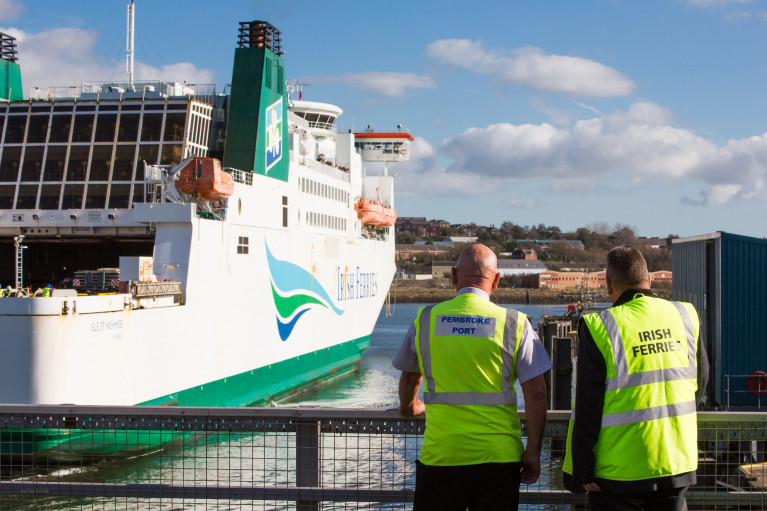Displaying items by tag: Sign 10 yr contract
Ferryport of Pembroke Dock is where fears that the south Wales port could become a casualty of Brexit have proved unfounded, with Irish Ferries signing a 10-year deal with the Port of Milford Haven.
The company has signed the deal with the Port of Milford Haven for the berth at Pembroke Dock, which first came into operation under B&I Line in 1979. (Afloat adds see reference to MV Connacht's maiden sailing of Cork-Swansea before switching the Welsh port to Pembroke)
Since then, the port of Pembroke has seen multimillion pound investments to improve facilities and creating jobs and has become established as an important transport link with Europe.
In recent weeks, Westminster politicians have raised the suggestion that, as a result of Brexit, Pembrokeshire could only support a single port linking the county and the M4 corridor with the Irish Republic.
Member of the Senedd for Mid and West Wales Eluned Morgan has welcomed the decision, saying it underlines its commitment to the port of Pembroke.
More writes Western Telegraph on this development.
As Afloat reported earlier this month, general manager of Rosslare Europort said Wales should focus on just one ferry port in Pembrokeshire instead of two (Fishguard Harbour) to run alongside the main ferry port of Holyhead. The GM citing this would entice hauliers back to Welsh routes crossing the Irish Sea.





























































